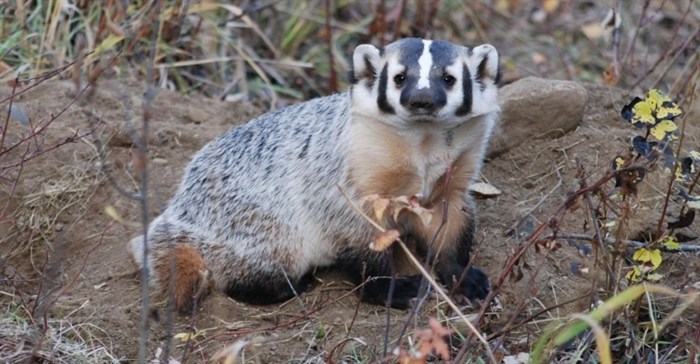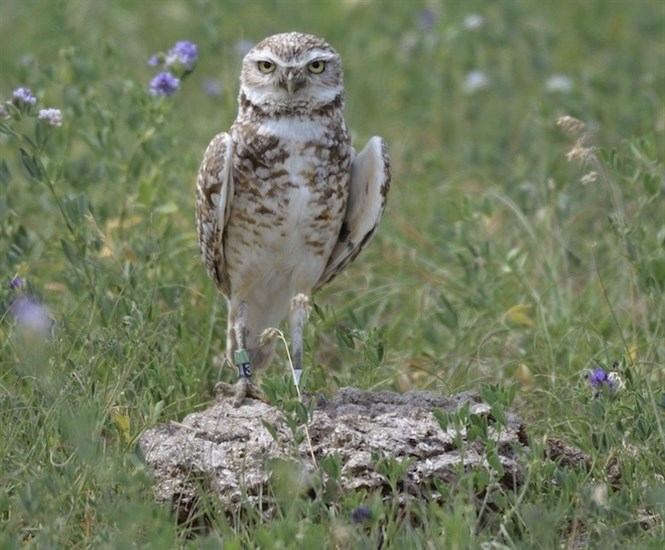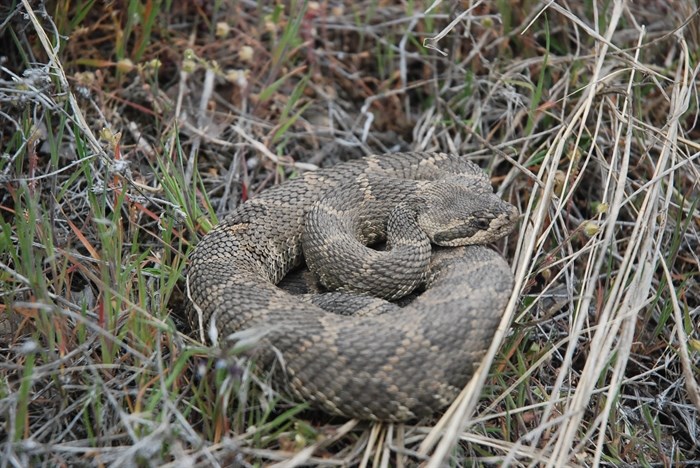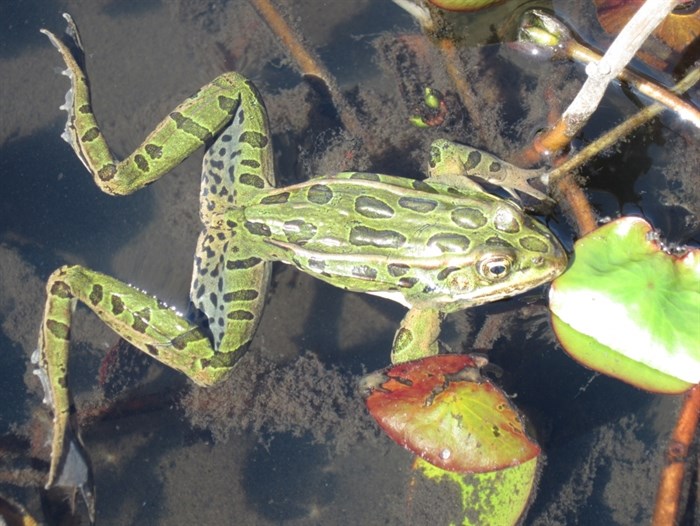
Badgers are considered an at-risk species in B.C.
Image Credit: Badgers in B.C.
August 21, 2024 - 6:00 PM
Some of Canada's most at risk animals call the Thompson-Okanagan region home.
In the region — one of the country's most diverse landscapes with deserts, mountains and valleys — the American badger, burrowing owl, western rattlesnake and the northern leopard frog are fighting the odds to survive.
“The Okanagan is a really special place because it’s a desert like ecosystem... you get a lot of species that aren’t anywhere else in Canada that are in the Okanagan,” Charlotte Dawe with Ecojustice Canada said.
Many contributing factors come together to create the perfect storm endangering these creatures but the biggest factor is human activity like logging, mining, vineyards and golf courses that destroy habitat. Climate change is another factor impacting animals at risk forcing them to migrate.
“Species are travelling north... up so this area will continue to be important for species that are trying to adapt with climate change,” Dawe said.
The American badger plays a crucial role in the ecosystem and are one of the most endangered animals. The habitats of the badgers have been negatively impacted by development which displaces the animals and increases the risk of extinction.
“The key habitats for badgers – grasslands and open pine or fir forests along the major valleys – have been greatly modified by development of towns, rural subdivisions, ranches, orchards, golf courses and highways. Many former habitats, particularly in the Okanagan area, no longer support badgers,” according to the BC Ministry of Water, Land and Air Protection.
Badgers are omnivores and eat small mammals and local vegetation. They are at risk of eating rodents that have been poisoned.
Badgers dig holes and build dens in the ground to live in and seek refuge from predators. These burrows can be used by other animals as shelter but because there are fewer badgers, there are fewer badger holes for other animal use leaving them animal exposed to predators.

Burrowing owl
Image Credit: SUBMITTED
“In British Columbia, these dens were once particularly important for western rattlesnakes and for the rare burrowing owl,” the ministry said. At this time, there are only 25 to 30 American badgers left in the Okanagan.
The burrowing owl is at risk of extinction from being indirectly targeted by humans. The owls use the holes American badgers dig to build nests, which is a unique trait these owls hold compared to other owls who perch and nest in trees. While this owl can dig holes, they strongly rely on badger holes for nesting.
These owls typically prefer to live in grassland areas, which are becoming increasingly rare. Without burrows, the owls are exposed and more at risk to predators.
“The grasslands in which they live are restricted to the dry valley bottoms of the southern Interior and comprise less than one per cent of the area of the province. This already small area of natural grassland is being further diminished by expanding towns, intensive agriculture and urbanization, especially in the Okanagan Valley and the Thompson-Nicola region,” the ministry said.
“Being ground-dwellers, it is difficult for (the owls) to detect approaching predators or find prey in brush land or forest... the extent of suitable habitat is quite restricted in BC.”
It is unknown exactly how many burrowing owls are left in the Okanagan, but the number is known to be between one and 50, according to the Atlas of the Breeding Birds of British Columbia.

Western rattlesnake.
Image Credit: Karl Larsen
The western rattlesnake, though known as an intimidating creature to some, is at risk of extinction in the Okanagan also primarily due to human contact.
Studies near Vernon showed only about 25 per cent of western rattlesnakes survived past their first year of life.
“Farms, subdivisions, highways, and other developments have destroyed some rattlesnake dens and foraging areas, and many snakes are killed by highway traffic. These threats will become more serious as land development and human populations increase,” the ministry said.
While some snakes are killed by natural predators, similar to the American badger and burrowing owl, the biggest threat a western rattlesnake faces is the harm to its habitat, leaving limited space for shelter to hide from hazards.
The western rattlesnake likes to bask in the sun to warm up on rocks hidden away and isolated. As their habitat is destroyed for housing, farming and other developments, the snakes look in other locations for something familiar to them.
Many snakes end up basking on roads as they would on a rock in their natural habitat. This can ultimately lead to vehicles running the snakes over and further lowering the population.

Northern leopard frog
Image Credit: BC government
The northern leopard frog is a rare species in BC and is endangered due to predators. The frog typically resides in damp soiled areas and open grassy sites and is also being at risk of habitat destruction exposure.
Northern leopard frogs have been disappearing since the 1970s and the overall cause is still unknown though the are particularly at risk from invasive species that prey on them.
“Northern leopard frogs are vulnerable to introductions of predators such as fish or bullfrogs in the breeding ponds,” the ministry said.
There are currently over 150 of the frogs in captivity in BC and they are being bred to be released into the wild. These frogs lay between 1,000 and 5,000 eggs in a mass, although about 98 per cent end up as prey for other animals.
All of the animals rely on each other to survive in their habitat.
“It’s a functioning ecosystem, these species all evolved together. If you start to remove one from an ecosystem, it’s going to have cascading impacts on the other ones that rely on it. It truly is all connected, as you strengthen one you strengthen the other,” Dawe said.
To contact a reporter for this story, email Bailey Zimmer or call 250-808-0143 or email the editor. You can also submit photos, videos or news tips to the newsroom and be entered to win a monthly prize draw.
We welcome your comments and opinions on our stories but play nice. We won't censor or delete comments unless they contain off-topic statements or links, unnecessary vulgarity, false facts, spam or obviously fake profiles. If you have any concerns about what you see in comments, email the editor in the link above. SUBSCRIBE to our awesome newsletter here.
News from © iNFOnews, 2024